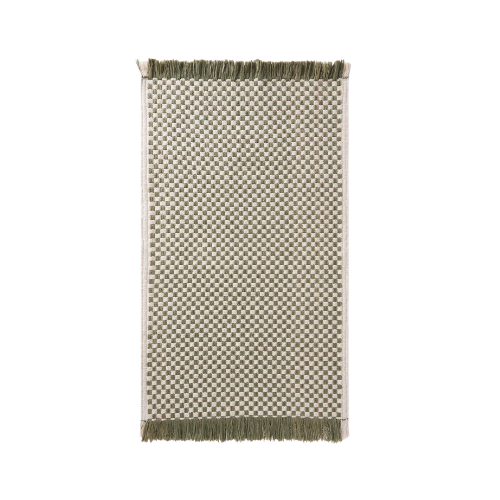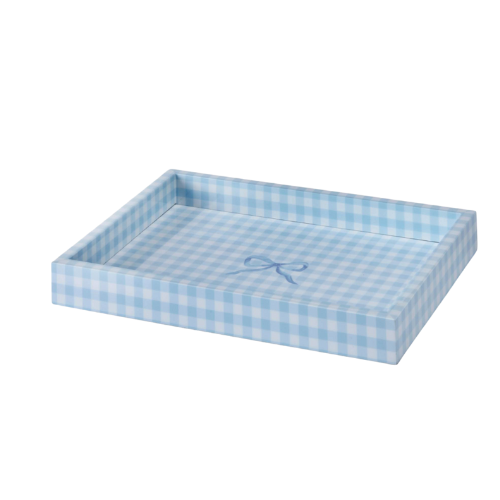This 'Plaid' Trick Might Be the Best Way to Make Simple Tiles Look Designer in a Kitchen or Bathroom
Not just for picnic blankets and school uniforms, plaid and gingham have found a new home on your bathroom walls
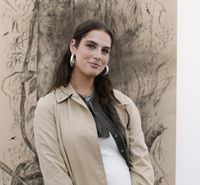
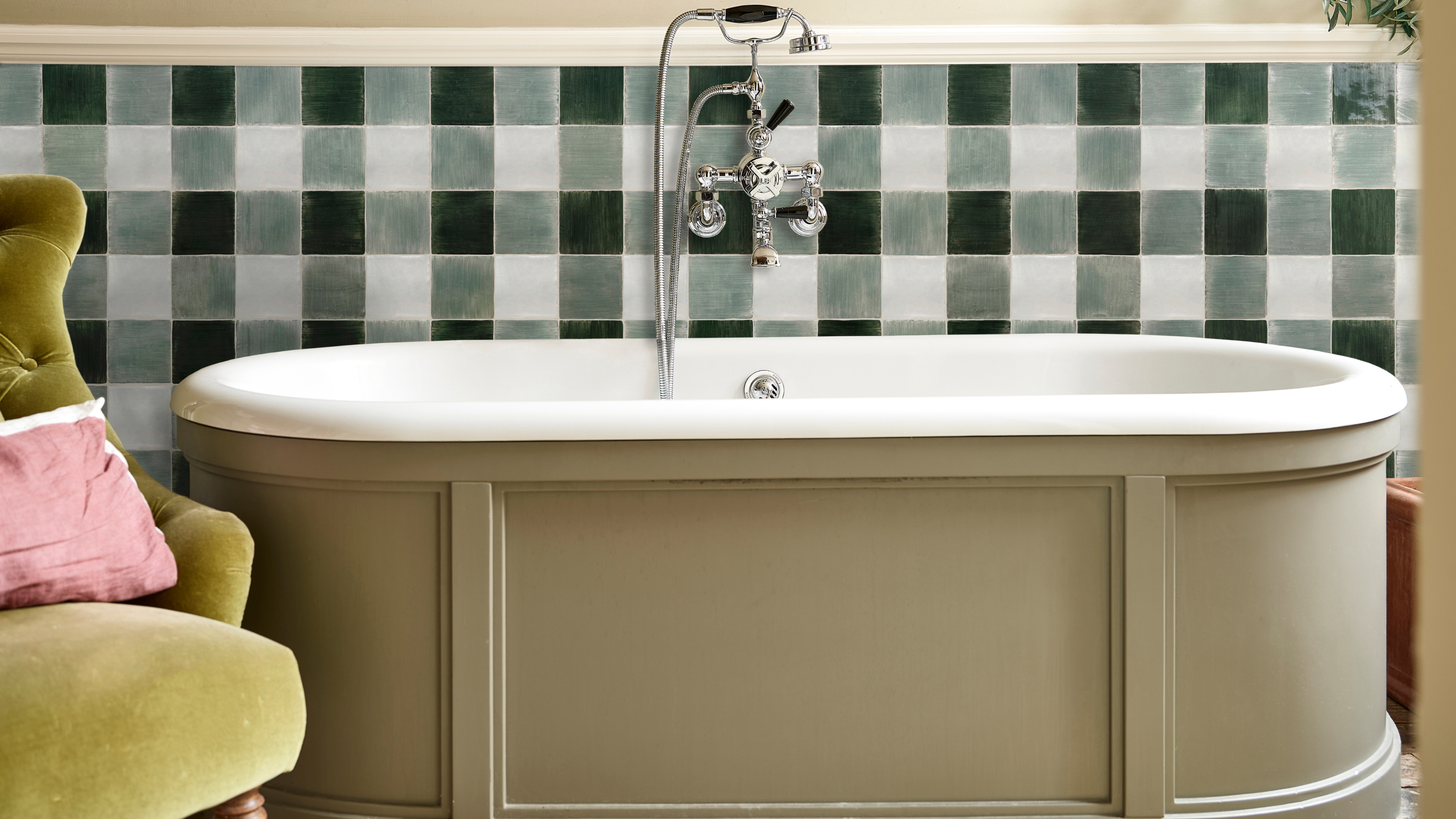
Summertime picnics and old school restaurants, gingham is a print that sparks memories of a joyful, carefree existence. So why wouldn't you want to bring a bit of that joy into your bathroom?
Gingham tiles capture the essence of the iconic print and reimagine it in a modern, unexpected way, effortlessly modernizing the timeless design. Whether you opt to cover your bathroom in floor-to-ceiling print or isolate it on a small sink splashback, this has undoubtedly become one of our most loved bathroom tile trends of the year.
There is a touch of countryside charm to this design, though the graphic color blocking aspect does lend it a more modern feel. This combination of aesthetics explains the surprising adaptability of this design, looking just as natural in a rustic farmhouse-style bathroom as it does in a sleek, modern shower.
Why Choose Gingham Tiling
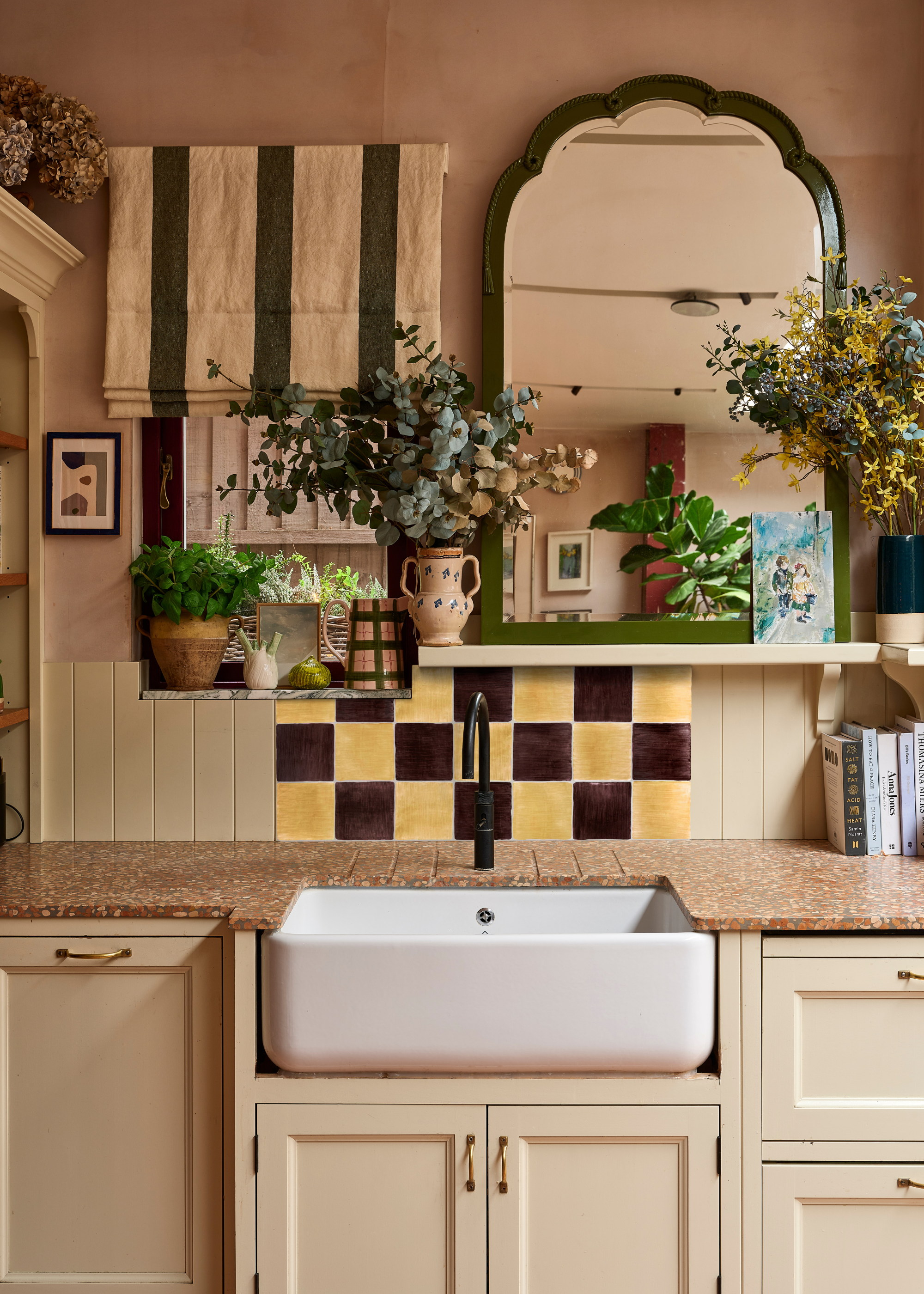
In interiors and fashion, gingham and plaid each have the unique ability to be both timeless and playful, making them an excellent choice to bring into your bathroom design. "Plaid and gingham have such a rich design heritage, with deep roots in both fashion and interiors," says Damla Turgot, from Otto Tiles and Design, "They’re patterns that strike a balance between nostalgia and modernity and that’s why we’re seeing these patterns are having a moment right now."
Playing into our general desire to find comfort and solace in our interiors, as seen in the rise of 90s kitchen trends, this print taps into our romanticization of childhood memories with an elegant update.
"People are craving design that feels comforting and familiar, but still fresh, and these classic grid-based patterns answer that. They're versatile, playful, and lend themselves to both bold statements and subtle layering," Damla explains.
This sentiment is echoed by Grazzie Wilson, at Ca'pietra, who says, "The gingham tiling look takes its cue from the comforting familiarity of traditional textiles - think picnic blankets, farmhouse kitchens, and vintage tablecloths - but gives it a modern twist through geometry and surface design. It taps into the broader movement toward nostalgic interiors with a handcrafted, homely feel. There's something instantly joyful and grounding about gingham; it’s pattern at its most honest and approachable, and when translated into tile, it brings that same charm to walls and floors in a more permanent, practical way."
The Livingetc newsletters are your inside source for what’s shaping interiors now - and what’s next. Discover trend forecasts, smart style ideas, and curated shopping inspiration that brings design to life. Subscribe today and stay ahead of the curve.
This approachable 'handcrafted' aspect of gingham is particularly well expressed through tiling, where slight imperfections can add to the overall charm of the space.
Damla continues, saying, "In tile design specifically, the interest in handcrafted, textural materials has helped drive plaid and gingham forward, offering a way to bring structure and rhythm to a space while still celebrating imperfections and artisanal quality."
How to Style Plaid and Gingham Tiling
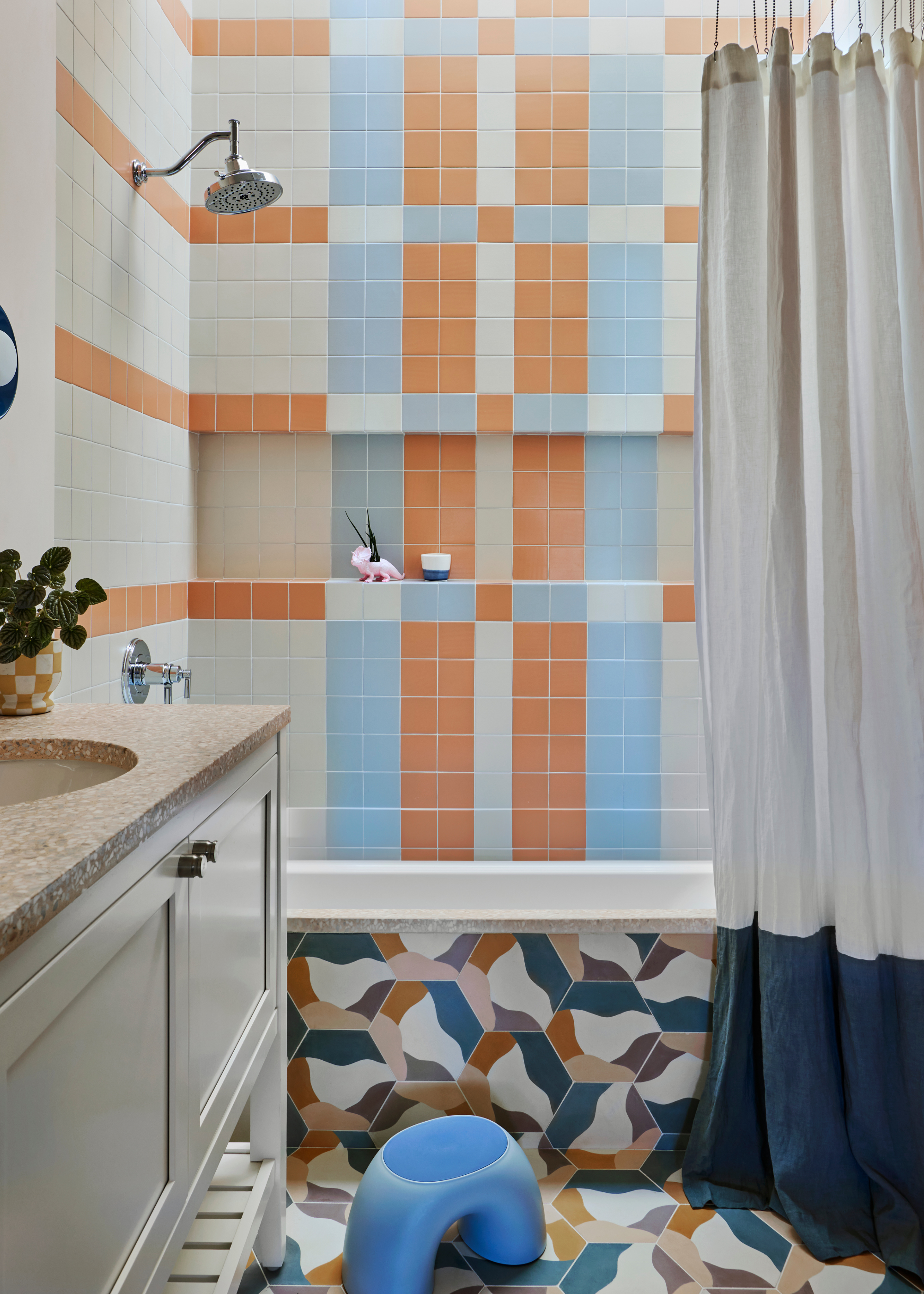
Depending on the color combination you select, gingham and plaid tiles can be styled to suit a broad spectrum of interior design aesthetics. Though our experts do have some tips on how to make them look their best.
"Gingham tiles lend themselves beautifully to layered, textural interiors. You can go playful by pairing them with scalloped details, painted cabinetry, and vintage finds, or keep it elegant with shaker joinery and tonal schemes," says Grazzie, "Keep surrounding finishes fairly pared-back to let the gingham sing or echo its tones in accessories and soft furnishings for a more cohesive look."
A playful tiling trend like this is an excellent way to make an all white bathroom look more interesting, bringing a pop of color and texture to your space. A neutral setting also allows the focus to remain on the tiles, making them the standout feature of your space.
As Damla explains, "Because plaid and gingham tile patterns have a visually strong graphic presence, styling should allow the pattern to be the statement piece."
To achieve this, she says, "I would recommend balancing bold and colourful designs with natural materials and a minimal, contemporary scheme, allowing the tiles to be the hero. Timber, linen, rattan, and limewashed finishes will soften the structured grid of a plaid or gingham, creating a grounded and relaxed feel."
One of the most appealing aspects of this trend is its adaptability. By customizing the colors to reflect your taste, you can create a truly unique and personal look.
"If you want to incorporate a plaid /gingham design within your interior but aren’t a fan of more darin,g vibrant hues, subtle, earthy tones and tonal neutrals work beautifully for a modern take on this look," says Damla.
Jamie Chappell from Fireclay Tile adds, "Consider color as the primary tool for setting the mood. For example, a monochromatic palette in varying shades creates a sophisticated and subtle take on the pattern, while bolder colors amplify the visual impact and inject more energy into the space."
The Best Materials to Use
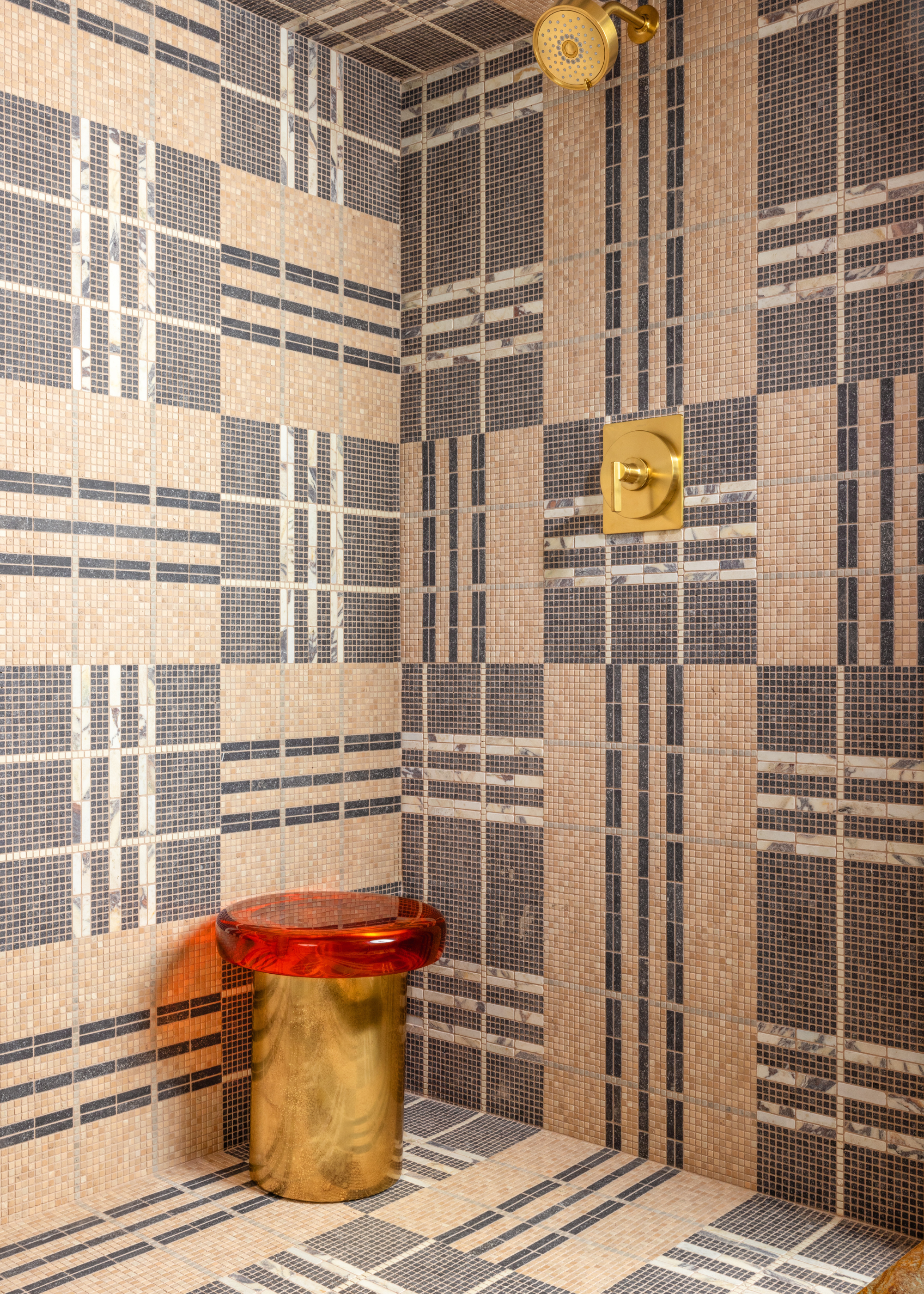
Beyond your color selection, the finish of the tile you select will also shape the final look of your patterned tiling. While a high-shine zellige tile can offer a more polished look, a matte finish would work beautifully in more rustic homes.
"To achieve a true gingham effect, look for tiles with a matt or chalky finish, nothing too glossy. Terracotta or softly pigmented porcelain all work well, especially in shades like warm clay, dusky rose, olive, pale blue, and soft ivory," recommends Grazzie.
To take it a step further, decorating with textured or patterned tiles can help further emphasize the gingham effect. "Patterned tiles that mimic woven textures or are laid in a check format using alternating tones can help achieve the gingham look in a more subtle or tonal way," says Grazzie, "Handcrafted finishes or muted glazes will keep it from feeling too crisp or graphic."
Zach Epstein from Artistic Tile agrees, saying, "We love the challenge of translating a classic design motif into tile form. For our Handloom Shadow Stripe, we utilized tesserae mosaics to mimic the feel of a woven plaid."
Steering away from harsh edges and crisp lines can help create a more rustic, soft feel, though for modern homes, sharp lines may be a more natural fit.
"Handmade Zellige and encaustic cement tiles are ideal for bringing plaid and gingham patterns to life. Zellige’s tonal variation and soft edges introduce a beautiful organic quality, while cement tiles allow for sharper, more graphic interpretations and bolder color pairings. The natural matte finish of cement also brings a warm, tactile quality to the look," explains Damla.
What Spaces Does This Trend Work in?
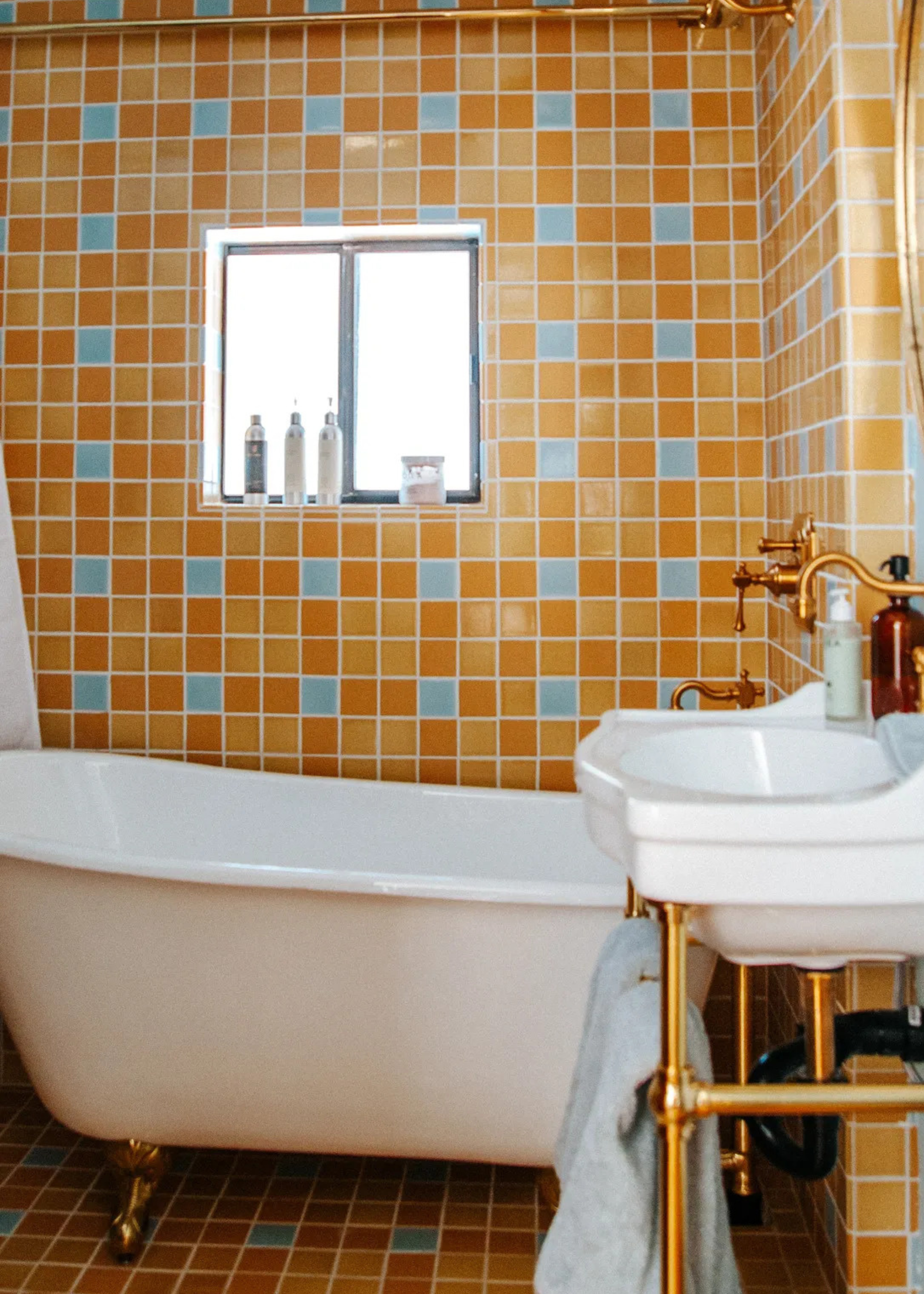
"Gingham tiling works anywhere that benefits from a bit of character and comfort," says Grazzie. Simple yet eye-catching, go full-force and tile drench your space in this pattern, or use it sparingly to highlight an architectural feature.
"It can add a sense of fun in small doses, like a tiled splashback or cupboard interior, or make a confident statement across a floor. It's also brilliant for zoning, use gingham tiles to define a nook or create contrast within an open-plan layout. It brings personality without overpowering the space," Grazzie explains.
Damla agrees and says, "Plaid or gingham tiling can be a striking feature when used in moderation — for example, as a backsplash, shower wall, or even a kitchen island surround."
However, she continues, "It also looks wonderful when used more expansively across a floor, where the repeat pattern can really sing."
Using this pattern on your bathroom floors can help bring some more personality to your space. As Jamie explains, "Plaid and gingham patterns work particularly well on floors, providing a durable and aesthetically pleasing surface that can handle daily wear, especially if you select a slip-resistant matte finish."
While other patterns may be at risk of appearing stifling or overwhelming when used in excess, the simplicity of this pattern prevents this possibility, widening the potential for this design
"Beyond the obvious choices, such as entrance or kitchen wall, this type of tiling also looks great wrapping a bathtub, drenching a powder room, framing a doorway or a fireplace surround," says Damla.
She continues, explaining, "This look is incredibly versatile. It works beautifully in kitchens, bathrooms, and hallways. We’ve also seen it used creatively on stair kickers and outdoors in pools and patios where the geometry feels even more playful."
If you're as big a fan of this trend as we are, why not take it beyond your bathroom and explore some additional plaid home decor? This print would look just as striking draped across your sofa or decorating the walls of your kitchen.
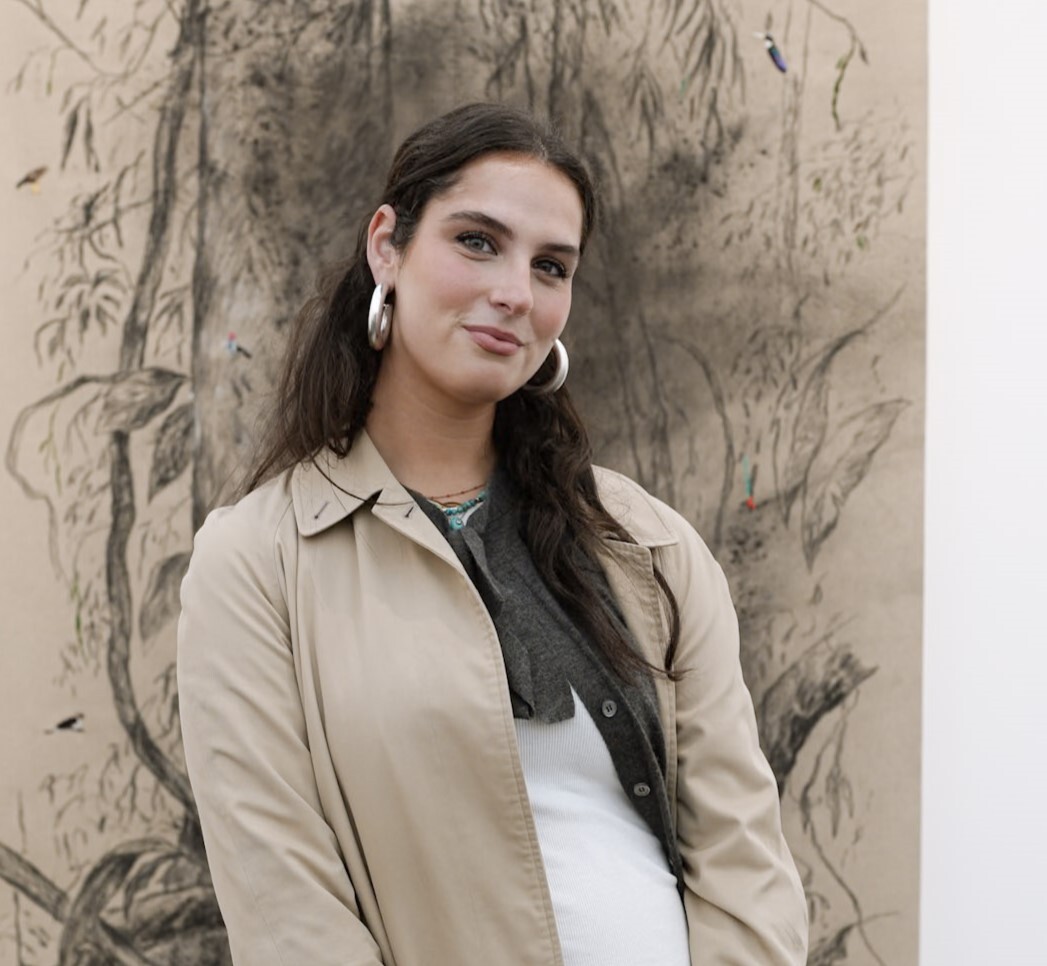
Maya Glantz is a Design Writer at Livingetc, covering all things bathrooms and kitchens. Her background in Art History informed her love of the aesthetic world, and she believes in the importance of finding beauty in the everyday. She recently graduated from City University with a Masters Degree in Magazine Journalism, during which she gained experience writing for various publications, including the Evening Standard. A lover of mid-century style, she can be found endlessly adding to her dream home Pinterest board.
